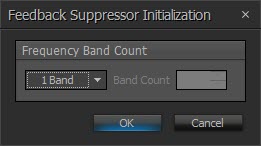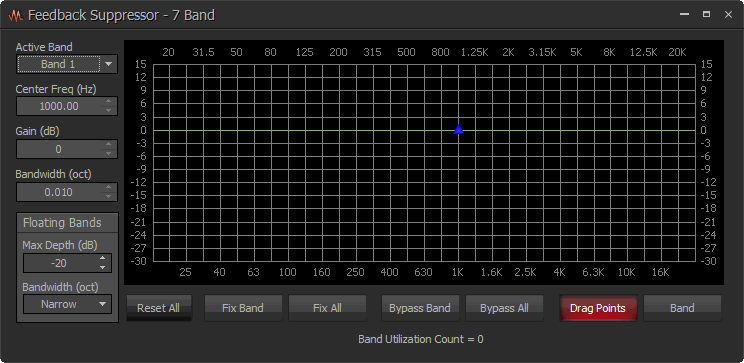Feedback Suppressor
Initialization Dialog

| Name | Description |
| Frequency Band Type | Up to 16 bands can be specified. |
DSP Block Representation

Control Dialog

Feedback Suppressors behave like an automatic, cut-only Parametric Equalizer. They utilize 'floating' bands of equalization which detect and remove feedback frequencies.
Active Band selects the current band for which settings will be displayed. The following three parameters are read only when the band is set to floating, and are editable when the band is set to fixed. Center Freq (Hz) displays the center frequency for the current band. Gain (dB) displays the amount of cut applied at the center frequency for the current band. Bandwidth (oct) displays the range of frequencies, above & below the center frequency, which are affected by the current band. For the Floating Bands, Max Depth restricts all floating bands to a selected maximum depth (cut) and Bandwidth (Narrow = 1/40-octave; Wide = 1/10-octave).
Reset All temporarily returns the gain of all floating bands to 0dB (flat). Fix Band and Fix All allow the band(s) to become manually adjustable (non-floating). Bypass Band and Bypass All disable the band(s) without changing settings. Drag Points turns on/off the band controls, revealing the resultant curve only. Band highlights the current band inside the graph. Band Utilization Count indicates the number of floating bands currently being employed.
NOTE: Feedback Suppressors are fairly intensive in their use of DSP resources. They are limited to a maximum of sixteen bands, however, in most applications the number of actual bands used should be significantly less. Fixed bands in a Feedback Suppressor may be copied to a Parametric Equalizer. When applicable, this may be a more DSP efficient choice.